BMI 40
BMI classification for a BMI of 40
Classification of the BMI 40 for women and men according to the relevant BMI tables.
BMI 40 result for adult women 19 years and older
The BMI signals severe overweight
strong underweight | underweight | normal weight | overweight | severe overweight |
| 15 | 16.5 | 18.7 | 25 | 29.7 |
BMI 40 result for adult men 19 years and older
The BMI signals severe overweight
strong underweight | underweight | normal weight | overweight | severe overweight |
| 15 | 17.6 | 19.6 | 25.4 | 29.7 |
BMI progress for infants
The diagrams show the progression of BMI areas for toddlers aged up to 2 years.
Boys
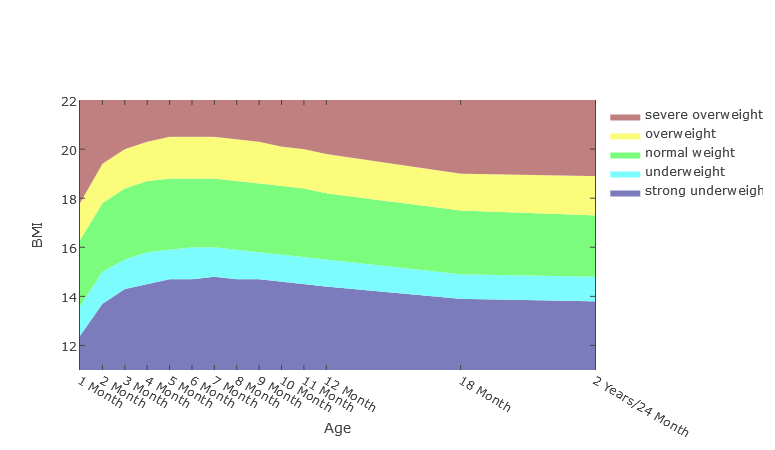
Girls

BMI progress for children and adolescents
The diagram shows the progression of BMI areas for children and adolescents aged 2 to 18 years.
Boys
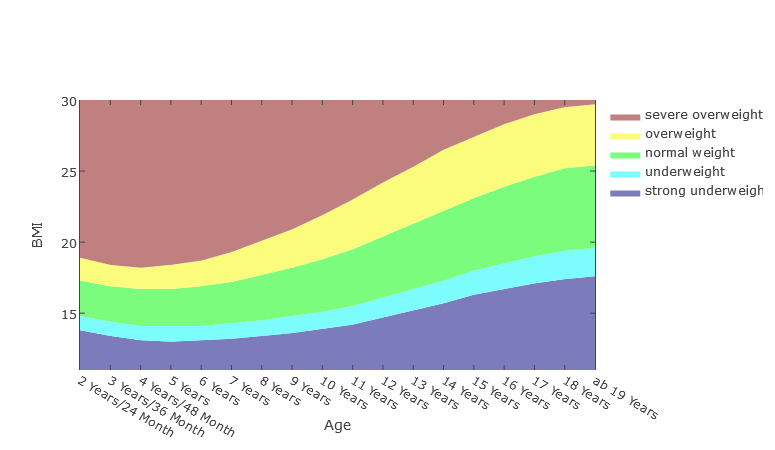
Girls
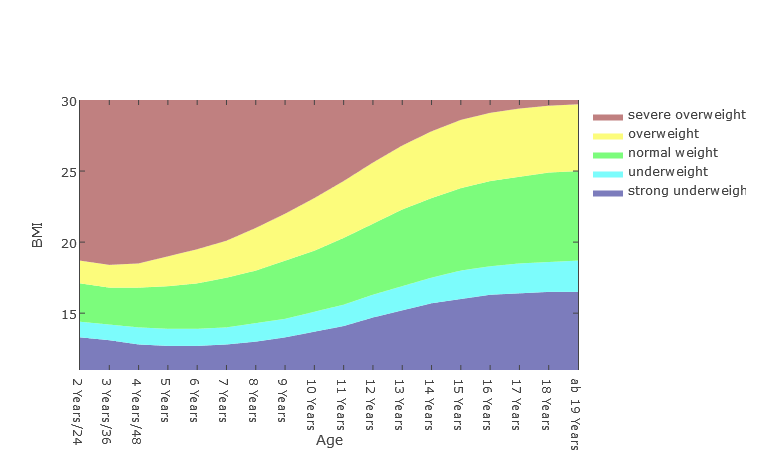
BMI progress in weight to height chart
Due to the different growth in children, the height-to-weight ratio may make more sense. But also in general it is interesting to consider the BMI in terms of size. The question of which BMI and which size is answered by the BMI weight over size diagram . The diagram shows the progression of BMI ranges in relation to height to body weight. The BMI Calculator also shows the weight limits at the given size in the graphical classification of the result.
Boys 50 - 100cm
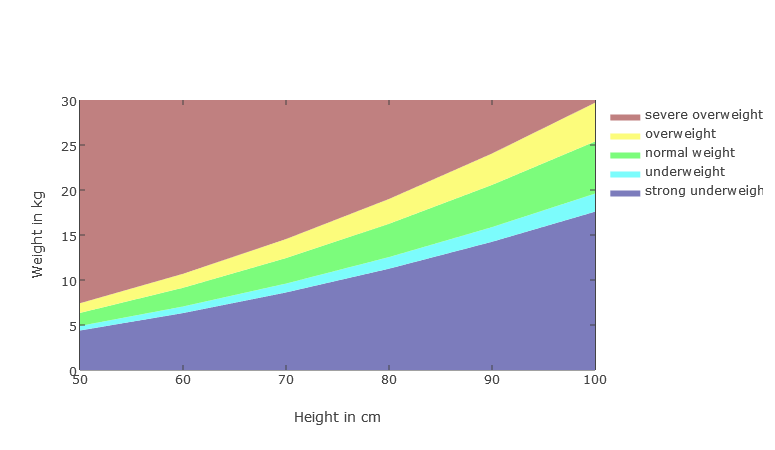
Girls 50 - 100cm
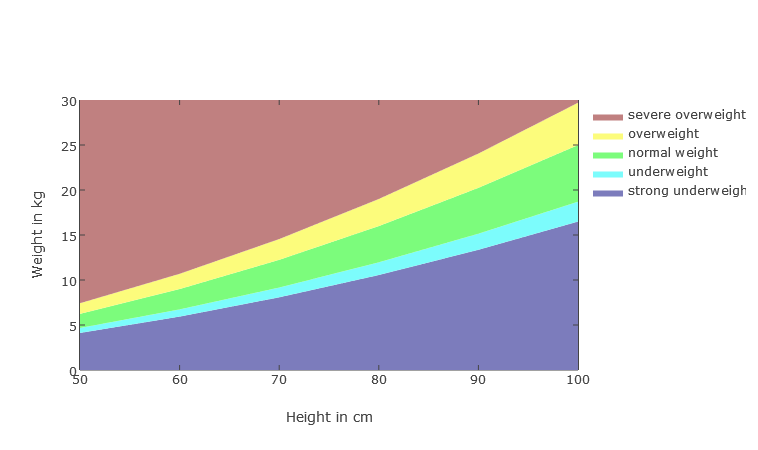
Boys 100 - 150cm
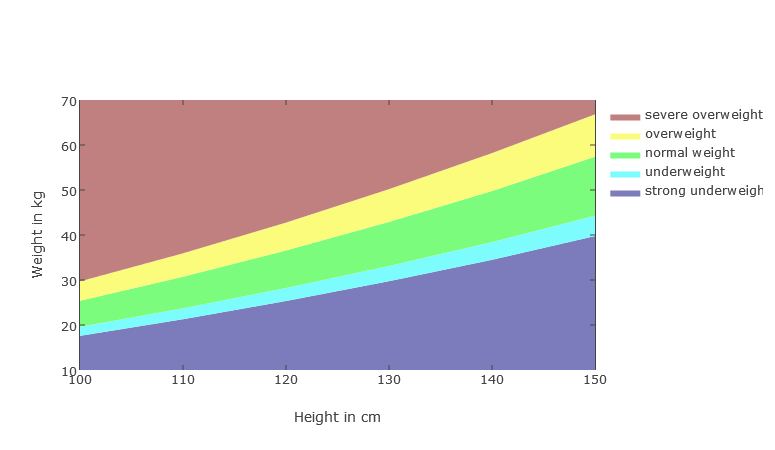
Girls 100 - 150cm
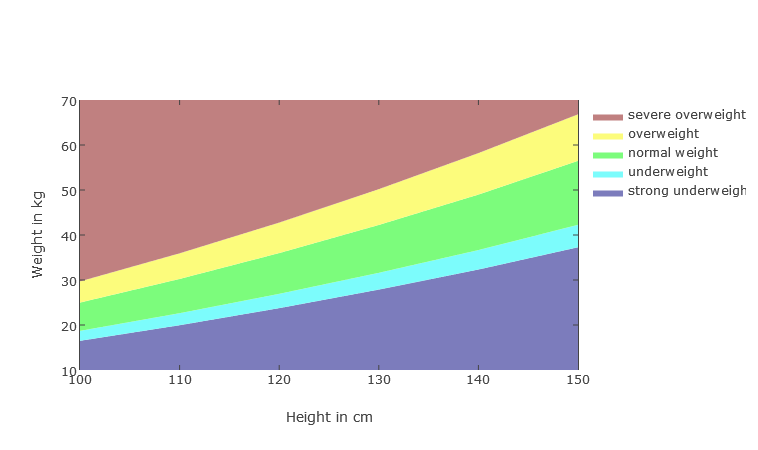
BMI Tables
The BMI thresholds for adults are:
Gender
strong underweight
underweight
normal weight
overweight
strong overweight
Male
BMI < 17.6
17.6 < BMI < 19.6
19.6 < BMI < 25.4
25.4 < BMI < 29.7
29.7 < BMI
Female
BMI < 16.5
16.5 < BMI < 18.7
18.7 < BMI < 25.0
25.0 < BMI < 29.7
29.7 < BMI
The BMI thresholds for children and adolescents you can find here in the BMI tables.
BMI TablesBMI Calculator
The Online BMI Calculator calculates the BMI for children, adolescents and adult men and women and evaluates the result according to the BMI tables.
BMI CalculatorBMI Calculation
The Body Mass Index (BMI) is a measure that sets the weight in the ratio to the square of the body weights. The BMI is a rough guide, since it does not take into account either stature or weight distribution. Since the beginning of the 1980s, the BMI has also been used by the World Health Organization. The present BMI classification of the WHO has essentially existed since 1995.
BMI = m / L2
with m : Weight in kg, L : Height in m
The interpretation of the calculated BMI value is based on the comparison with the tabulated average values of the population. That is, the normal range (green in the diagrams) corresponds to the average in the population at the time of the survey.
Explanation of the BMI
The Body Mass Index (BMI) is a measure for the assessment of the body weight of a person in relation to its body size.
The BMI is only a rough guideline as it does not take into account the stature and sex or the individual composition of the body mass from fat and muscle tissue of a human being.
Age and gender play an important role in the interpretation of BMI. Men generally have a higher proportion of muscle mass in total body mass than women. The BMI can also be used in children and small children as a measure for the healthy development of the child. However, the BMI is interpreted by adults according to the same formula as the BMI for childs but is interpreted according to age.
The limits of an appropriate BMI are strongly related to the development of the child. For example, the rapid growth of the length in the initial phase of puberty and the like is depicted. If a child develops these developmental phases sooner or later than the average, a BMI that is too high or too low, depending on the age group, can be present.
Body Mass Calculators
Here is a list of calculators with which it is easy to calculate the corresponding body indices:
Calculation of the Body Indices Calculator for the Body Indices BSI Calculator BMI Calculator AMI Calculator Broca Calculator Ponderal Calculator Body fat and FFMI WHtR Calculator WHR Calculator